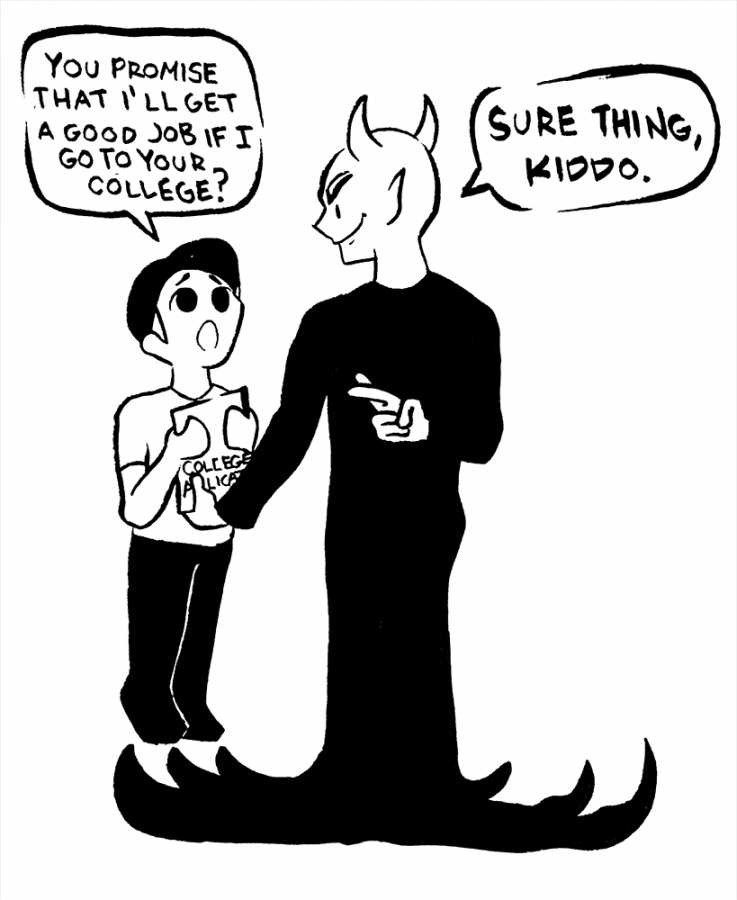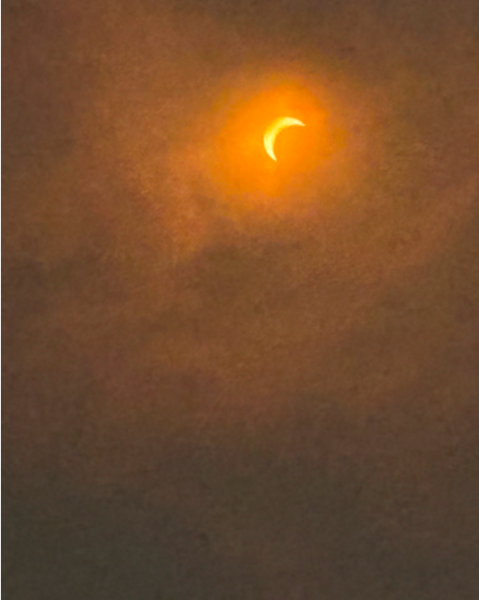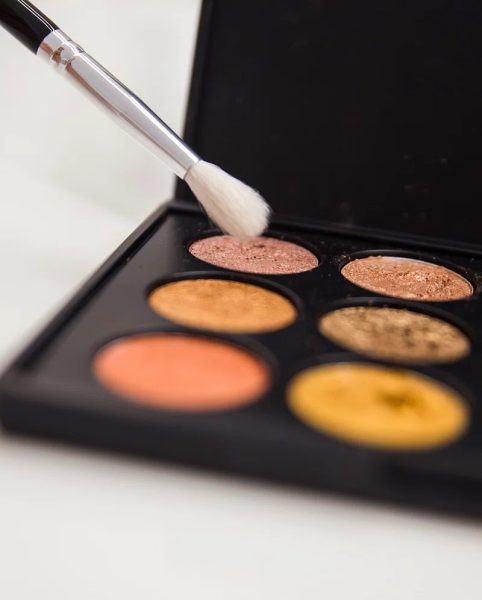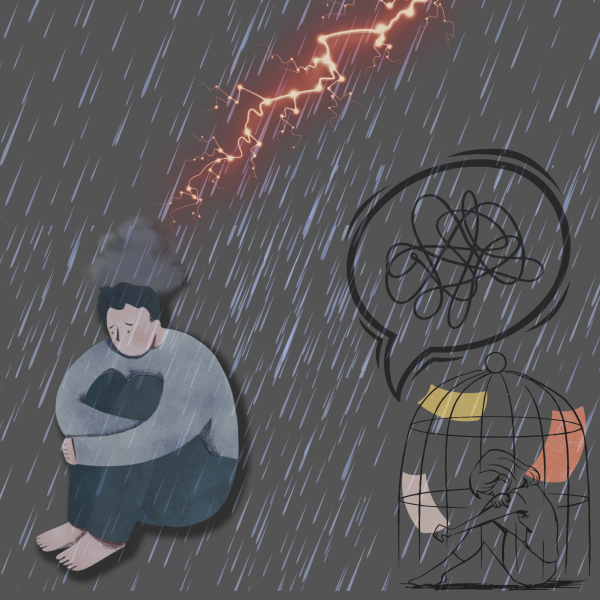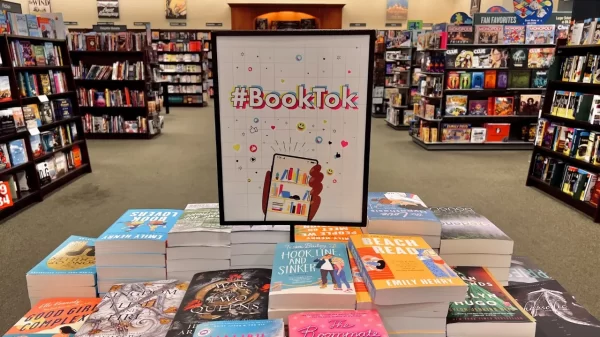Making the most of a college visit
Artwork by Jared Wilson ’19
Visiting colleges can be quite intimidating, even just the thought of it. Finding the right age and time of year to start can be tricky.
But if you’re not in the group of people that are procrastinating just so the ideology of college will magically go away, then you should be visiting colleges the correct and efficient way. How do you make the most of your college visit?
You need to start from the beginner’s line before racing through this complicated course. Getting advice from upper classmates or the guidance office on the proper age to start visiting colleges is the first thing you should do.
Mr. Anderson from the guidance department said the process is different for every student. “We stress junior year,” he said. “Sophomore and freshman years are good to get a head start.”
As life of a high schooler gets more stressful and busy when you’re nearing senior year, one might have less time to visit colleges. The college application process alone is a tremendous weight on seniors’ backs, adding sports, clubs and activities, and a job. The last thing you want to worry about at that point is driving up to a college visit.
However, if you wait until senior year to start visiting colleges, then you could accidentally rush your time there. You might find out when it’s time to go to a college that they don’t have much safety. The tour might never stop at your dorm and now you don’t like where you are living. By then, it’s too late, but this can be prevented if you start early.
As you plan to visit colleges you should not feel pressured to visit every local college or even every college you’re applying to. It’s not financially possible to visit every school you’re applying to or interested in. That’s where online research is important. Mr. Anderson agreed that you should do research online and do it before you visit a college.
“Absolutely! Guidance counselors help students learn a very helpful tool called Naviance. It gives you data on who gets accepted to what college, costs, and admission.”
However, when you’re actually on a college website you should check out its past, admission and graduation rate, degrees and programs, and its international programs, as well as its housing and dining along with researching its professors.
With research, which should be kept in a small notebook or printed out and put in an organized folder to keep for when you need to make the nal decision, now it’s time to start planning when to go. The best idea is to go visit when school is in session.
“Nothing gives you a feel like walking on campus,” said Mrs. Bunnell-Jackson from the guidance department. If you visit during the summer in July or August then you won’t really get an idea of the lifestyle there. Just before your visit, you should compile a list of questions to ask tour guides, students around the college, and administration or teachers. First impressions are important too.
“You want to look nice and present yourself well,” said Mrs. Bunnell-Jackson. While you’re there on the visit, it’s okay if you are shy or want to ask a one-on-one question.
You should ask about your college’s safety policy. With the amount of time you’ll spend on campus, you’ll prob- ably want to know what the college does to take safety precautions.
You might also want to look into their on-campus incidents. Coming with questions about financial aid is something you should also do. However, it probably isn’t a good idea to ask a tour guide these questions because they might not go into depth. Don’t be afraid to go directly to the financial aid department on campus.
While asking questions, don’t forget it would be a good idea to bring some paper or a notebook and a camera to take some pictures of the campus, the dorms, the classrooms, and the facilities inside and out. Take key notes of the conditions of the college, how close the center of town is, and anything else that would be important later on when taking a look back at your visit.
If you come with family members or friends, you should politely ask them to let you explore on your own. Separate from the tour for a little while and go exploring the college. This will give you good headspace and not have someone else’s opinion like a parent or a friend whispering in your ear things that they don’t like.
There are obviously parts of the campus that you won’t get to see on the tour so this alone time will be necessary. This will give you a better view of the college altogether.
“I ask kids, could you see yourself living there for four years?” said Mr. Anderson. While walking around, pick up the school newspaper to see what issues its students care most about and to get information on what’s happening around the college. Walk around the cafe and the student centers. While shortly previewing the movie Ivory Tower, a movie asking whether college is worth the expense or not, it showed some campuses building rock walls and even lazy rivers!
If you’re paying as much as college is worth, you should walk around and see where your money is going to provide you with the best experience of college. “All that goes on your bill!” called out Mr. Bowne while also previewing the movie.
It’s a good idea to also ask students some questions when walking around. Go up to students sitting on benches or standing by some lockers and ask them what their favorite classes are, who their favorite professors are, and maybe what they are majoring in. They would give you a more honest answer rather than a tour guide speaking in front of everyone. It’s important to get their opinions too because they matter.
After you are done collecting all your key notes, pictures, and have asked your questions, you should do some things when you arrive home to conclude your visit. First of all, don’t judge the college as soon as you get back in your car. There are bad days and good days and if you think that you need to revisit, then by all means set up another visit. If you know someone staying at the college, ask them to let you stay overnight and really get a personal feel for it. Second, once you get home, draw out a pros and cons list.
Take the pictures from your camera and print them out and spread them on a table alongside your notes and answers to questions.
Make your list about things you were happy seeing and things you disliked and when it’s time to pick your college, you’ll be thankful you were well organized and got the best experience from visiting college.

